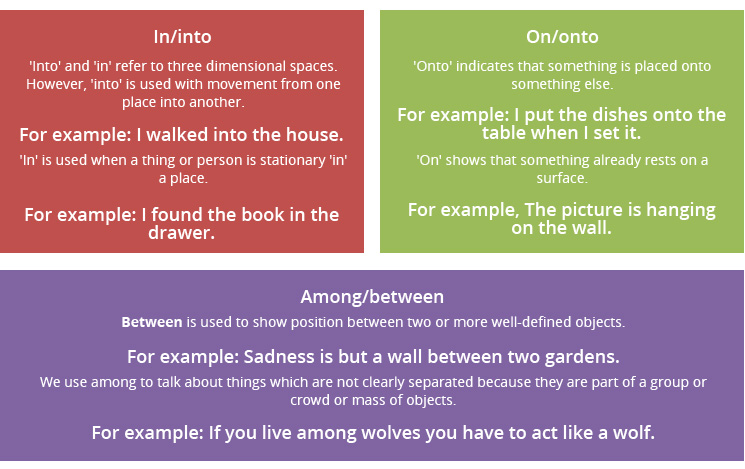Commonly Confused Prepositions

While prepositions are limited in number, they are important because they act as vital markers to the structure of a sentence; they mark special relationships between persons, objects, and locations. Prepositions hold a privileged position as parts of speech as they are a “closed class.” In other words, they are a select group of words that don’t accept new members to their club. This is in contrast to nouns, adjectives and verbs, which welcome new additions to their respective groups all the time and are open to evolving with usage.
Do not let the known, limited pool of prepositions fool you, though; for instance, the same preposition “to” in English can thus be used as a lexical spatial preposition: I’m going to London, or as a functional preposition assigning dative case: Give the book to him!
Today, we are going to look at the subtle, but relevant, difference between some prepositions whose usages are commonly confused:

Prepositions are even harder to master for non-native speakers of English as the native, first-language nuances of non-native speakers hinder the logic of proper preposition usage. Each language has its own set of grammar rules, so there are points of conflict when someone wants to learn a second language. As observed, the most common preposition misses are as follows.
- Transfer of a specific preposition from their native language into English (substitution);
- Usage of a preposition when it should not be used (addition);
- An obligatory preposition is omitted in some cases (omission).
Let’s ensure accurate usage of prepositions not only through the general understanding of their specific usage but also understanding their usage in a given context.









